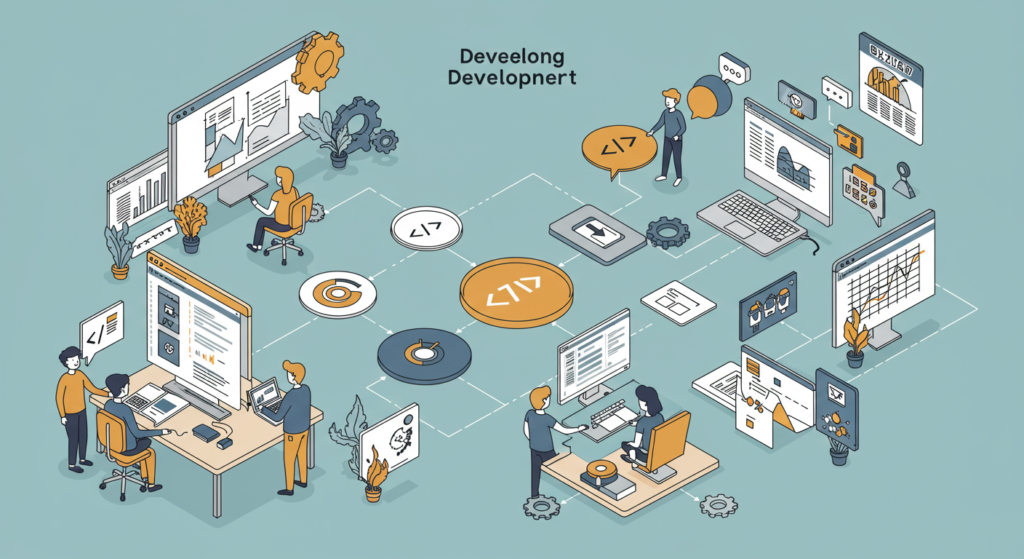Introduction
The ability to develop Oxzep7 software has become an increasingly important skill in today’s digital-first economy. Businesses, developers, and innovators are constantly seeking ways to create applications that are not only functional but also scalable, secure, and adaptable to the rapidly changing technological landscape. Oxzep7 software is particularly significant because it represents a modern approach to addressing complex operational and user-centric challenges through a structured development process. From conceptualization to deployment, learning how to develop Oxzep7 software allows organizations to position themselves as leaders in their respective industries while meeting the evolving needs of customers.
When businesses decide to develop Oxzep7 software, they are not just building another program; they are investing in a long-term strategy that prioritizes performance, reliability, and user satisfaction. This software development process emphasizes modularity, adaptability, and innovative integrations, allowing organizations to respond quickly to market demands. For example, industries such as healthcare, finance, and e-commerce can benefit significantly from Oxzep7-driven systems due to their ability to streamline workflows, improve data security, and enhance customer experiences. By adopting this development framework, teams can reduce inefficiencies and create solutions that truly resonate with end-users.
Understanding the Core Principles of Oxzep7 Software
To effectively develop Oxzep7 software, it is crucial to understand its foundational principles. Oxzep7 is built on flexibility and modular design, ensuring that applications can adapt to different environments without requiring complete rewrites. This allows developers to build systems that scale seamlessly, whether they are serving a hundred users or a million. The framework emphasizes performance optimization, meaning applications created using Oxzep7 are not only robust but also efficient in resource management.
Another core principle lies in user-centric design. Software must cater to its end-users, which is why Oxzep7 emphasizes intuitive interfaces, responsive layouts, and streamlined workflows. Businesses that develop Oxzep7 software with user experience in mind often see higher engagement and satisfaction rates. For example, a retail company might use Oxzep7-based tools to personalize shopping experiences, leading to improved customer loyalty and increased revenue.
Key Benefits of Developing Oxzep7 Software
Organizations that choose to develop Oxzep7 software can expect a range of tangible benefits. First, scalability becomes a natural outcome. Businesses can start small and expand their systems as demand grows without having to overhaul existing infrastructures. This is particularly advantageous for startups aiming to attract investors, as scalable solutions demonstrate long-term growth potential. Additionally, Oxzep7 software often integrates seamlessly with cloud environments, making it easier to deploy updates and maintain systems efficiently.
Another major benefit is improved security. Data protection is a top concern for any modern business, and developing Oxzep7 software incorporates best practices for safeguarding sensitive information. Built-in security protocols, encryption methods, and regular updates ensure that organizations stay ahead of potential threats. A financial services firm, for instance, could use Oxzep7-based systems to process transactions securely, reducing the risk of breaches while maintaining customer trust.
The Development Process for Oxzep7 Software
The process to develop Oxzep7 software typically follows a structured methodology. It begins with requirement analysis, where stakeholders identify specific goals and technical needs. This step ensures that developers have a clear roadmap, reducing the likelihood of scope creep or misaligned objectives. After gathering requirements, teams proceed to design, focusing on architecture and user interface planning. This stage sets the foundation for efficiency and usability.
Following design, the coding phase brings the project to life. Developers write clean, maintainable code that adheres to Oxzep7’s modular principles. Testing then plays a critical role, ensuring that every component functions as intended before full deployment. Businesses that invest in rigorous quality assurance processes minimize the risk of post-launch issues. The final stage, deployment and maintenance, ensures ongoing performance, updates, and optimization to keep the software aligned with user expectations and technological advancements.
Best Practices for Teams Developing Oxzep7 Software
When organizations set out to develop Oxzep7 software, adopting best practices is essential for success. One key practice is fostering strong communication between developers, project managers, and stakeholders. Misalignment at any stage can lead to costly errors or delays. Teams that use collaborative tools, such as agile project boards or real-time feedback platforms, often experience smoother workflows and higher productivity.
Another important best practice is continuous testing and iteration. Instead of waiting until the end of development, testing should occur throughout the lifecycle. This proactive approach reduces technical debt and ensures that the final product aligns with both functional requirements and user expectations. For instance, a healthcare provider developing Oxzep7 software might run usability tests with doctors and nurses throughout the build, ensuring the system truly enhances clinical workflows.
Challenges in Developing Oxzep7 Software
Despite its advantages, the journey to develop Oxzep7 software is not without challenges. One major hurdle is the learning curve. Teams unfamiliar with its modular and scalable design may struggle initially, which can slow down development. Organizations often mitigate this issue by investing in training or partnering with experienced consultants. Another challenge lies in resource allocation, as high-quality development requires skilled professionals and sufficient funding.
Security and compliance also pose challenges, especially for industries with strict regulations. While Oxzep7 incorporates robust safeguards, developers must still ensure compliance with regional and global standards such as GDPR or HIPAA. Failure to do so could lead to significant financial and reputational damage. Overcoming these challenges requires foresight, careful planning, and a commitment to continuous improvement.
Real-World Applications of Oxzep7 Software
The decision to develop Oxzep7 software is often driven by practical use cases across industries. In healthcare, for example, hospitals use Oxzep7-based systems to manage electronic health records, ensuring seamless data sharing among providers. This improves patient outcomes while reducing administrative burdens. In retail, businesses can leverage Oxzep7 solutions to build personalized shopping platforms that increase customer engagement and sales.
Financial institutions also benefit greatly from Oxzep7 software. Secure transaction systems, fraud detection tools, and real-time reporting platforms are examples of how Oxzep7 can transform financial operations. By creating tailored solutions, companies gain a competitive edge, streamline workflows, and deliver superior customer experiences. These real-world examples demonstrate the versatility and impact of Oxzep7 across diverse industries.
Conclusion
Learning to develop Oxzep7 software equips businesses with a powerful framework for building innovative, secure, and scalable solutions. Its modular design principles, emphasis on user experience, and strong security features make it highly adaptable across industries such as healthcare, finance, and retail. While challenges such as compliance and resource allocation exist, organizations that embrace best practices and structured processes can overcome them successfully.
Ultimately, the decision to develop Oxzep7 software is not just about creating a digital product—it is about future-proofing operations, improving customer satisfaction, and driving long-term growth. For companies that prioritize innovation, Oxzep7 offers the perfect foundation to achieve their goals. Businesses that invest in this development approach today will be better positioned to thrive in an increasingly competitive digital world.





